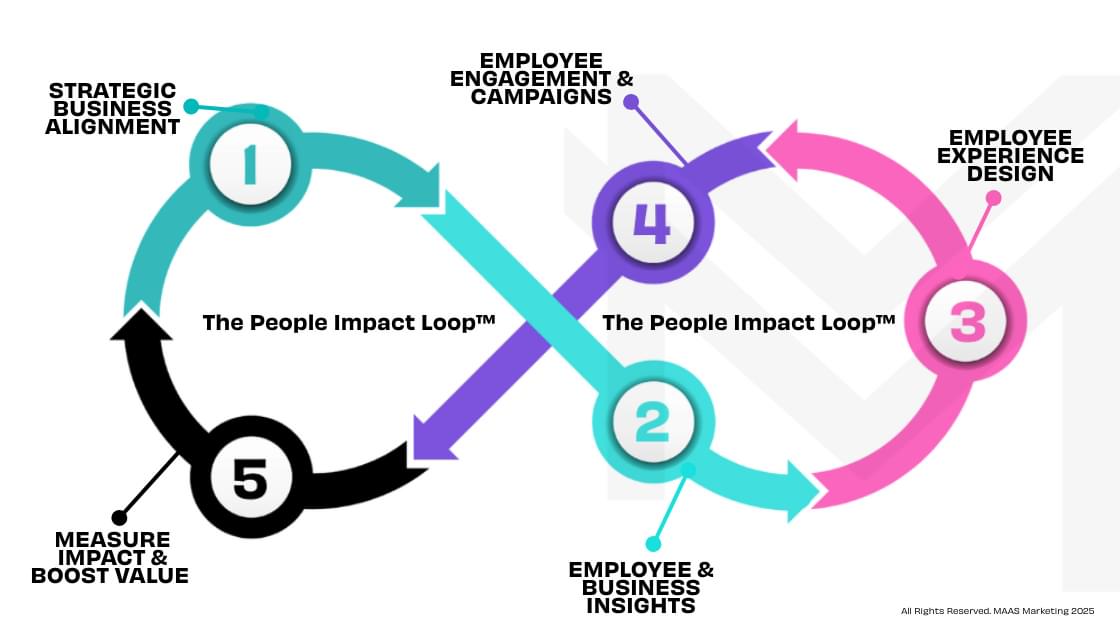want some cookies?
We use cookies to make your browsing experience amazing.

You built the course. You launched the platform. You sent the email.
So why did no one show up?
It’s one of L&D’s most frustrating truths: we pour weeks (sometimes months) into building content that never gets used. Or it gets opened once, clicked through out of obligation, and promptly forgotten.
And yet... we keep doing it. More modules. More nudges. More checklists. More stuff.
We call it strategy. But let’s be honest: it’s hope with a header image.
Welcome to the Field of Dreams Fallacy: the belief that "if you build it, they will come." It worked in a movie. But trust us, it doesn't work in modern L&D.
WHY MOST LEARNING ENGAGEMENT STRATEGIES FAIL
Most L&D teams are trying to fix engagement challenges with content — but content isn’t the problem. The real issue is the lack of a strategy that puts people first. Most L&D efforts follow a predictable, surface-level pattern:
Someone requests a course
We build it quickly
Upload it to the LMS
Send out a launch email
Hope for the best
Maybe we throw in a badge. Maybe we add a notification. But more often than not, it lands with a dull thud — no engagement, no behaviour change, no real business impact. Just silence. And yet we repeat the cycle, convinced that with the right content or a shinier format, it’ll all magically click. The truth? Without a people-first strategy, it won’t.
CONTENT ISN’T ENOUGH — CONTEXT IS EVERYTHING
People don’t engage with learning just because it’s available. In a world overflowing with content, access alone means nothing. What makes someone stop, click, and actually care is relevance — to their role, their goals, and their reality. If they can’t see how it connects to something they’re trying to achieve or overcome, they’ll move on. Learning that feels generic, detached, or overly theoretical is easy to ignore. Relevance isn’t a nice-to-have. It’s the price of entry.
But relevance isn’t just about content — it’s also about context. If learning shows up at the wrong time, in the wrong place, or through the wrong channel, even the best-designed experience can fall flat. People are busy. If a resource disrupts their flow instead of supporting it, they’ll dismiss it. That’s why great learning strategies don’t just focus on what to say — they focus on when, where, and how to say it. In other words, marketing for L&D matters. You can’t expect people to value something they don’t even notice.
Above all, people engage with learning when it solves a problem they actually have — not just one the business assumes they do. That’s the real test. If the content isn’t grounded in lived experience or tied to a genuine challenge, it will feel disconnected, no matter how slick it looks. That’s why any learning engagement strategy worth its salt must start with real audience insight and business context. Without that, you’re not launching a strategy. You’re making noise.
A BETTER WAY: THE PEOPLE IMPACT LOOP™
Instead of jumping straight to content creation, what if you followed a strategy that made learning unmissable?
That’s what the People Impact Loop™ is all about.

MAAS Marketing’s 5-phase framework helps People teams work smarter, not louder:
Employee & Business Insights — Ask better questions. Run focus groups. Map needs.
Strategic Alignment — Align every initiative to actual business goals, not just requests.
Experience Design — Build learning that’s contextual, accessible, and human.
Engagement Campaigns — Don’t just launch. Market your initiative across touchpoints.
Impact & Optimisation — Measure outcomes, not outputs. Adjust based on real data.
When you follow this loop, you close the gap between what you launch and what people actually use.
FROM LAUNCHING TO LANDING: MAKING LEARNING STICK
The most effective learning engagement strategies don’t begin and end with content. They treat learning like a full experience — a journey that starts long before someone clicks “enrol” and continues long after the final slide. That means asking deeper, more intentional questions before anything gets built. Who is this really for — not just by job title, but by mindset, motivation, and need? Why would they care — what’s in it for them beyond compliance? How does this tie into what they’re already trying to achieve? These aren’t afterthoughts — they’re the foundation of engagement.
You also have to think about timing and follow-through. Where and when will someone encounter this learning? In their inbox? Mid-shift? During a team meeting? If you don’t plan for the moment of delivery, you miss the moment of impact. And what happens after? Are they expected to apply it? Reflect on it? Share it? Sustain it? Learning is a process, not a product. If you can’t answer these questions clearly and confidently, you’re not building a strategy — you’re gambling on good intentions. And that’s a risk L&D teams can’t afford.
READY TO CLOSE THE LOOP?
If you're done building learning that gets ignored, it's time to stop guessing — and start getting strategic. The People Impact Loop™ gives you the structure to build with purpose, align with the business, engage like a marketer, and measure what actually matters.
No more crossed fingers. No more wasted launches.
It's time to build learning that lands.










